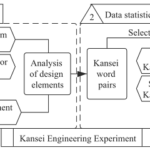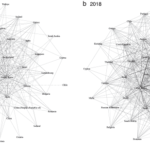
In the modern digital era, where companies constantly evolve and technology advances at a rapid pace, effective management strategies are crucial for success. One such strategy that stands out is Management 3.0, also known as Agile management or Management 3.0.
Adopting Management 3.0 is not just a trend; it is a paradigm shift that enables organizations to stay agile, adapt to change, and thrive in a constantly changing business landscape.
With Management 3.0, traditional hierarchical structures are replaced by self-organized teams, fostering a culture of empowerment and innovation. Agile management emerges as one of the pathways to implement collaborative management (Almeida y Espinheira, 2022), encouraging leaders to be facilitators rather than “commanders,” promoting employee engagement and collaboration.
This article delves into Management 3.0, explores its basic principles, and provides practical insights on how to implement it effectively. Whether you are the founder of a startup, a mid-level manager, or an experienced executive, this article will equip you with the knowledge and tools needed to tackle the challenges of the digital age and drive your organization towards success.
What is Management 3.0?
In 2010, J. Appelo, in his book titled “Management 3.0. Leading Agile Developers, Developing Agile Leaders,” introduced the concept of Management 3.0 as a leadership framework, based on the idea that the best way to manage people is to create an environment where they can self-organize and work autonomously.
Currently, Management 3.0 is a paradigm that is being applied in the context of young and small companies adopting agile management processes (Almeida and Espinheira, 2022). Piwowar et al. (2020) highlight that the Management 3.0 concept was developed based on the agile project management concept; however, it can be implemented not only in projects but also throughout the organization.
Management 3.0, also known as Agile management, is an innovative methodology of business management that is based on agility, transparency, and employee participation. Inspired by Agile project management methodologies (Piwowar, 2020), it seeks to create more adaptable, efficient, and resilient organizations in response to market changes.
In this regard, Management 3.0 is a management philosophy that emerged in response to the changing dynamics of the digital age, as traditional management practices rooted in hierarchy and command-and-control are no longer effective in a complex and fast-paced business environment.
One key aspect of Agile management is the shift from hierarchical structures to self-organized teams. Instead of managers making all decisions and giving orders, teams have the power to make their own decisions and take ownership of their work. This not only increases employee engagement but also fosters a sense of ownership and accountability.
Additionally, Management 3.0 emphasizes the importance of learning and continuous improvement. It encourages experimentation, feedback, and reflection, enabling organizations to adapt and evolve in a rapidly changing business landscape. By adopting a growth mindset and fostering a culture of learning, organizations can stay ahead and drive innovation.
Management Evolution?
Business management is constantly evolving so that companies can respond to the changing context. In this regard, Table 01 presents a comparison between the three levels of Management.
Table 01. Evolution of Management.
| Management 1.0 | Management 2.0 | Management 3.0 |
| Views management as the struggle between freedom and control. Has a strong hierarchical structure. Leaders assume that improving something is based on monitoring, repairing, and replacing its parts. Management makes all decisions, while employees have little or no creative freedom and decision-making power. Creative processes and their results are the product of a small number of talented individuals. Employees must perform any task without questioning or improving. | Management makes all decisions, while employees have some opportunity to make decisions. The organization will consider individual opinions and ideas as long as they do not interfere with the opinions and ideas of top management. Everyone acknowledges that “people are the most valuable assets” and that good managers are “servant leaders.” However, management still maintains a hierarchical structure. Six Sigma and Total Quality Management (TQM) are some of the most modern management tools. | Based on the idea that everyone is responsible for the organization’s performance. Focused on co-creation. Organizations are viewed as a community where everyone is (partially) responsible for contributing to its success, and only a few are responsible for the whole. Aims to improve businesses through satisfied, motivated, and engaged employees. Leaders of the organization support the team as team members work together to activate synergies. This model can stimulate creativity and innovation, increase motivation and commitment, thereby improving productivity. |
Current Context: The Need for a New Management Approach
The current business world is in constant transformation. Markets are becoming increasingly dynamic and competitive, and companies need to adapt quickly to new customer needs and technological disruptions. Traditional management models, based on hierarchy and control, are no longer sufficient to meet these challenges.
Management practices have evolved significantly in the digital age. Traditional vertical management styles, characterized by strict hierarchies and rigid structures, are giving way to more flexible and collaborative approaches. The rise of technology and globalization has necessitated a shift towards more agile and adaptable management practices.
In the past, managers were seen as authority figures who held all the power and made all the decisions. However, the digital age has led to a democratization of information and a flattening of hierarchies. Employees now have access to information and resources like never before, enabling them to contribute more significantly to the organization.
Additionally, the digital age has also brought about a greater emphasis on speed and agility. Organizations must be able to respond quickly to market changes and customer demands. This requires a management approach that is flexible, agile, and capable of adapting to changing circumstances. Management 3.0 provides the framework for such an approach.
The Pillars of Management 3.0
Management 3.0 is based on a set of core principles that guide its implementation. These principles are designed to foster a culture of empowerment, collaboration, and continuous improvement. Piwowar et al., (2022) report that Management 3.0 consists of six pillars such as: energizing people, empowering teams, aligning constraints, developing competence, growing the structure, and improving everything.
Below is a brief description of each pillar:
- Growth Structure (Self-Organization): Management 3.0 encourages self-organized teams, where individuals have autonomy to make decisions and take ownership of their work. This promotes creativity, innovation, and accountability.
- Energizing People: Management 3.0 recognizes the importance of employee engagement and motivation. By creating a positive work environment, recognizing and rewarding achievements, and providing growth opportunities, organizations can energize their workforce and unlock their full potential.
- Empowering Teams: Management 3.0 emphasizes the importance of empowering teams to make decisions and take ownership of their work. This not only increases engagement but also fosters a sense of ownership and accountability.
- Aligning Constraints: While self-organization is encouraged, it is important to provide teams with clear objectives and boundaries. By aligning constraints, organizations can ensure that teams work towards a common purpose while also having the flexibility to innovate and adapt.
- Developing Competence: Management 3.0 recognizes the importance of learning and continuous improvement. By providing opportunities for skill development and creating a culture of learning, organizations can enhance the competence of their workforce and stay ahead of the competition.
- Improving Everything: Regardless of current success, there should be a continuous effort to achieve improvement. This can be done by using tools to measure improvement in achieving goals at various levels, such as globally, sectoral, and/or individually.
The Benefits of Management 3.0
Implementing Management 3.0 can bring a range of benefits to businesses, including:
- Increased employee engagement: Employees feel more valued and accountable when they have the opportunity to participate in decision-making and company improvement.
- Improved productivity and efficiency: Collaboration and autonomy allow teams to work more efficiently and effectively.
- Greater adaptability to change: Organizations that adopt Management 3.0 are more flexible and better prepared to deal with environmental changes.
- Promotion of innovation and creativity: Employee participation and continuous improvement efforts create an environment conducive to innovation. In this regard, Stavska et al., (2022) highlights that using Agile management in innovation process management can accelerate its implementation, minimize and optimize the use of resources, and save time and effort of the staff.
Implementation of Management 3.0
Key Practices
Management 3.0 is not a magic bullet, but rather a set of principles and practices that can be adapted to the specific needs of each organization. Some key practices include:
- Delegating responsibilities: Giving employees the autonomy to make decisions and execute them.
- Setting clear goals: Defining common goals that inspire and motivate teams.
- Transparent communication: Sharing information openly and honestly with all employees.
- Continuous feedback: Implementing a feedback system to improve individual and collective performance.
- Recognition and celebration: Recognizing and celebrating employees’ achievements to foster motivation.
Roles and Responsibilities
In an organization that applies Management 3.0, roles and responsibilities are transformed. The leader becomes a coach who facilitates teamwork, empowers employees, and helps them reach their full potential. Employees take on a more active and responsible role, participating in decision-making and company improvement.
Management 3.0 Games
One unique aspect of Management 3.0 is the use of games and interactive activities to facilitate learning and collaboration. From “Moving Motivators” to “Delegation Poker,” these games offer interesting ways to explore topics such as motivation, delegation, and team dynamics.
Management 3.0’s Moving Motivators
Moving Motivators, a popular Management 3.0 game, helps teams understand individual motivators and how they align with their work. By identifying factors such as autonomy, mastery, and purpose, teams can tailor their approach to motivation and create environments where people feel fulfilled and engaged.
What Are the Three Levels of Management?
In the context of Management 3.0, the three levels of management can be understood as follows:
- Self-Management: At the individual level, self-management involves taking charge of one’s work, setting goals, and continuously improving one’s skills and abilities.
- Team Management: Within teams, management extends beyond designated leaders to include shared responsibility, collaboration, and collective decision-making.
- Organizational Management: At the organizational level, management involves creating an environment that fosters innovation, agility, and learning, empowering individuals and teams to drive positive change.
Tools and Techniques for Adopting Management 3.0
Some several tools and techniques can help organizations adopt and effectively implement Management 3.0. Here are some examples:
- Agile frameworks: Agile frameworks, such as Scrum and Kanban, provide a structured approach to project management and promote collaboration. These frameworks can be used to implement self-organized teams and foster iterative and incremental development.
- Feedback and reflection: Regular feedback and reflection sessions can help teams and individuals learn from their experiences and make continuous improvements. This can be done through techniques such as retrospectives, 360-degree feedback, and personalized coaching.
- Visual management: Visual management tools, such as Kanban boards and team dashboards, can help teams visualize their work and track progress. This promotes transparency and accountability.
- Gamification: Gamification techniques, such as leaderboards and badges, can be used to motivate and engage employees. By introducing elements of competition and fun, organizations can create a more engaging and rewarding work environment.
- Collaboration tools: Collaboration tools, such as project management software and communication platforms, can facilitate collaboration and knowledge sharing among team members. These tools allow remote teams to work together effectively and promote cross-functional collaboration.
Success Stories
There are numerous success stories of companies that have implemented Management 3.0 with positive results. Some companies that have applied this methodology include:
- Spotify: Spotify, the popular music streaming service, has adopted the “Squad Model” inspired by Management 3.0. This model organizes teams into small, cross-functional teams that have end-to-end ownership of a specific area of the product. This approach has allowed Spotify to foster innovation, collaboration, and autonomy among its teams.
- Zappos: Zappos, the online clothing and footwear retailer, has implemented Management 3.0 principles to create a culture of empowerment and engagement. The company has adopted self-organized teams, encouraged experimentation, and promoted a sense of ownership among its employees. This has resulted in higher employee satisfaction levels and customer loyalty.
Training and Certification for Management 3.0
To effectively implement Management 3.0 in your organization, it can be beneficial to invest in a certification training program. These programs provide individuals with the knowledge and skills needed to adopt Management 3.0 principles and practices.
Several organizations offer training and certification in Management 3.0, including Management 3.0 Foundation and Management 3.0+. These programs cover a variety of topics, including self-organization, employee engagement, and agile leadership. By participating in these programs, individuals can enhance their understanding of Management 3.0 and gain practical tools and techniques to implement in their organizations.
Overcoming Challenges When Adopting Management 3.0
While the benefits of adopting Management 3.0 are clear, there may be challenges in implementing this management philosophy. Here are some common challenges and strategies to overcome them:
- Resistance to change: Resistance to change is a common challenge when implementing Management 3.0. To overcome this, it is important to communicate the benefits of Management 3.0 and involve employees in the decision-making process.
- Lack of clarity: Without clear objectives and boundaries, self-organized teams may struggle to stay focused and aligned. To address this, provide teams with clear objectives and guidelines while allowing flexibility and autonomy. Stavska et al., (2022) indicates that one of the disadvantages of Management 3.0 is the unpredictability of decision-making.
- Lack of skills and knowledge: Adopting Management 3.0 requires a certain level of knowledge and skills. To overcome this, invest in training and development programs to equip employees with the necessary skills and provide ongoing support and resources.
- Organizational culture: Moving to a more agile and collaborative management approach may require a shift in organizational culture. This can be a challenge, but by fostering a culture of trust, openness, and continuous learning, organizations can gradually change their culture to embrace Management 3.0.
Resources to Get Started
If you are interested in implementing Management 3.0 in your company, there are many resources available to help you get started. Some examples include:
The Management 3.0 book by Jurgen Appelo
The Management 3.0 website is where you can download games and learn about events to develop your skills.
The Management 3.0 community.
Conclusion
In conclusion, adopting Management 3.0 is essential for organizations seeking to thrive in the modern digital age. By replacing traditional hierarchical structures with self-organized teams, organizations can foster a culture of empowerment, collaboration, and innovation. This approach promotes employee engagement, improves decision-making, and drives organizational success.
As the business landscape continues to evolve, the principles and practices of Management 3.0 will become even more relevant. By embracing this management philosophy and continuously adapting to changing circumstances, organizations can tackle the challenges of the digital age and unlock their full potential. Therefore, take the leap and adopt Agile Management today for a better future tomorrow.
References
Almeida, F., & Espinheira, E. (2022). Adoption of Large-Scale Scrum Practices through the Use of Management 3.0. Informatics, 9(1), 20. https://doi.org/10.3390/informatics9010020
Bilton, C. (2023). Cultural Management: A Research Overview. Routledge.
Piwowar-Sulej, K. (2020). Management 3.0 from the standpoint of modern concepts of people management and leadership theories. Entities’ Decision in Conditions of Economic Growth, 20-30.
Piwowar-Sulej, K., Sołtysik, M. and Różycka-Antkowiak, J.Ł. (2022), “Implementation of Management 3.0: its consistency and conditional factors”, Journal of Organizational Change Management, Vol. 35 No. 3, pp. 541-557. https://doi.org/10.1108/JOCM-07-2021-0203
Stavska, Y., Kopytko, M., Chуrva, O., Karvatska, N., & Chуrva, H. (2022). Agile Management (Management 3.0) as the Basis of the Management System in the Conditions of Globalization. International Journal of Computer Science and Network Security. 2022. Vol. 22 (2). P. 101-106.





